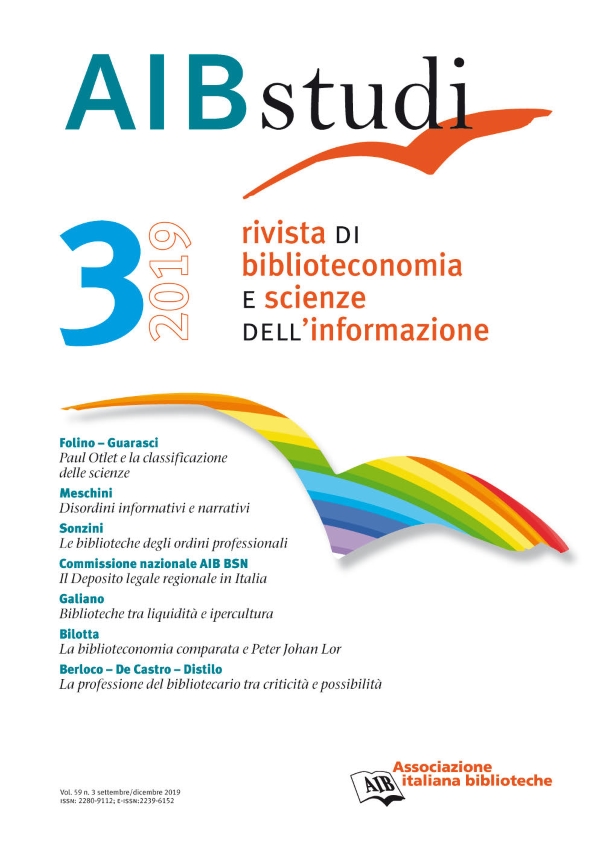Fake news and post-truth: information and narrative disorders between Gutenberg and Google
DOI:
https://doi.org/10.2426/aibstudi-12018Keywords:
fake-news, post-truth, information disordersAbstract
Fake news and conspiracy theories can be considered as information disorders and therefore as related to the relationship that each person has with information. Although the spread of computer networks and social media has made these disorders much more evident than in the past, they do not depend exclusively on the digital dimension of this relationship. This article examines the nature of information disorders and their different types in relation to information literacy on the one hand, and to storytelling on the other. The most frequently proposed solutions to information disorders, such as debunking or fact-checking, are based on assumptions that should not be taken for granted; for example the sharing of a common rational basis, which has been strongly called into question by the meaning of the term post-truth. For this reason, it is necessary to take into consideration storytelling and narrative modalities since their mechanisms are at the basis of the effectiveness and global spreading of fake news.Downloads
Download data is not yet available.
Downloads
Published
2020-04-27
How to Cite
Meschini, F. (2020). Fake news and post-truth: information and narrative disorders between Gutenberg and Google. AIB Studi, 59(3). https://doi.org/10.2426/aibstudi-12018
Issue
Section
Themes and analyses
License
Copyright (c) 2020 AIB studi

This work is licensed under a Creative Commons Attribution-ShareAlike 4.0 International License.









